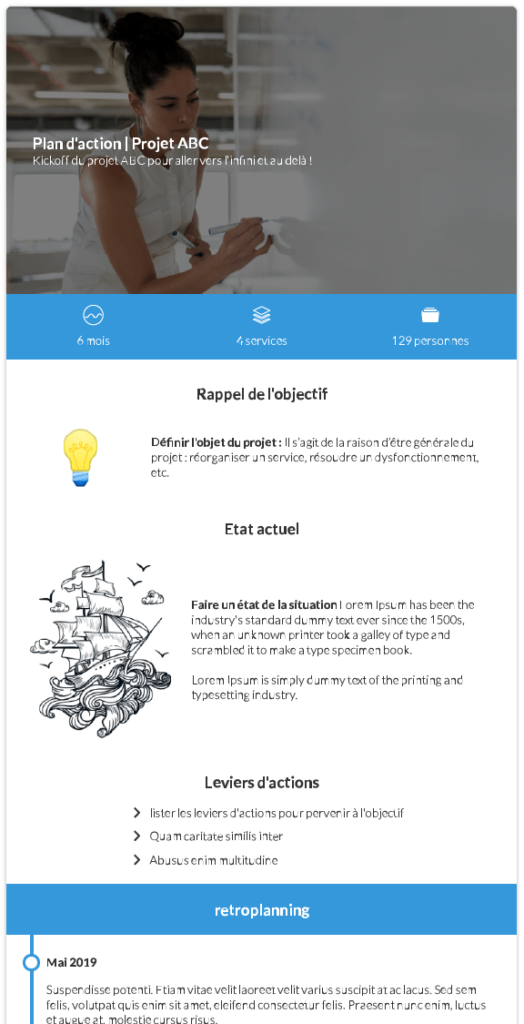03 Aug

You start a project, realize your vision, implement something new… So how to write a solid action plan?
We tell you everything!
By the way, an action plan, what is it?
An action plan is a list of steps or tasks that you will need to complete in order to achieve the objectives you have set for a given project.
It is a must in planning, it allows you to improve the planning of team work. Action plans can also be used for personal use!
What’s in an action plan?
- The objective(s) to be achieved, clearly detailed
- The different tasks and the steps to be taken to achieve this (these) objective(s)
- The people in charge of these different tasks
- The deadlines for each of the tasks
- The necessary resources
- Criteria for assessing progress
Of course, we must remain agile, an action plan is not something set in stone. As you go along, you will have to review and adapt it.
Why write an action plan?
This stage of writing an action plan tends to be skipped fairly easily. Big mistake!
Planning helps you better prepare for the obstacles ahead and keep you on track. With an effective action plan, you stay on track and everyone knows what to do!
In a few key points, an action plan allows you to :
- Have a clear orientation. Because an action plan outlines exactly what needs to be done and when, you will know exactly what you need to do and in what time frame.
- Putting your goals in writing and planning them in stages will give you a reason to stay motivated and committed throughout the project.
- With an action plan, you can track your progress!
- It will help you prioritize your tasks based on effort and impact.
- It is simple and accessible, everyone has the same level of information about the project, its stages, its progress and their personal role in this great project.
So concretely, how do we do it?
Step 1: Define your goal!
If you are not clear about what you want to do or what you want to achieve, it won’t work!
Whatever your objective is, define it clearly, and to do so, think about defining a SMART objective:
S – specific
M – measurable
A – achievable
R – realizable
T – temporally defined
Step 2: List the steps to follow
The objective is clear. What exactly do you have to do to reach it?
Create a rough template to list all the tasks to be completed, the deadlines and the people responsible.
It is important that you ensure that the entire team is involved in this process and has access to the document. This way, everyone will be aware of their role and responsibilities in the project.
Make sure that each task is clearly defined and achievable. If you encounter larger and more complex tasks, break them down into smaller, easier to perform and manage tasks.
Step 3: Prioritize Tasks and Set Deadlines
It is time to reorganize this list by prioritizing the tasks. Some steps may need to be prioritized, as they may block other sub-steps.
Add deadlines and make sure they are realistic.
Step 4: Set key moments
These mini objectives leading to the main objective at the end allow you and your team to see more clearly! With your prioritized task list, you can now create sub objectives!
Step 5: What do you need?
Before starting your project, it is essential to make sure that you have all the resources you need to carry out each of these tasks.
Make your action plan as visual as possible! (👇voir below our Cocoom templates! )
And don’t forget that your work doesn’t stop there, evaluate your work! Evaluate what worked and what didn’t work so well to progress!
There is a Cocoom template for that!
The other articles on the templates of the “Project Management” pack:
Update on problem solving





